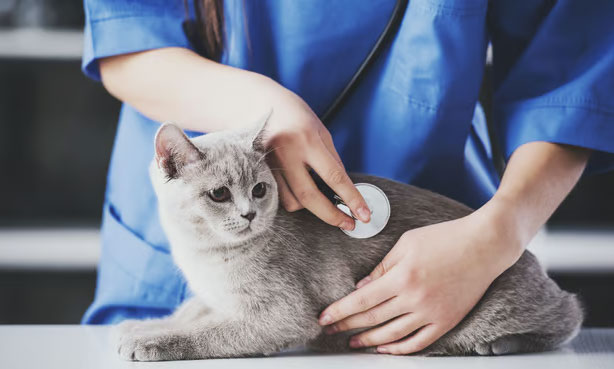Cat Insurance: A Cost-Effective Health Protection Plan
Owning a cat can be a rewarding experience, but it also comes with responsibilities, including managing their health and unexpected medical costs. Cat insurance is an affordable way to protect your feline friend against unforeseen illnesses and accidents, ensuring they receive the best care without breaking the bank.

Benefits of Cat Insurance
Cat insurance offers several advantages that help pet owners manage their cats’ health and financial well-being:
- Financial Security: Covers a significant portion of veterinary bills, including emergency care, surgeries, and medications, reducing out-of-pocket expenses.
- Peace of Mind: Knowing you have insurance allows you to make healthcare decisions based on your cat’s needs, not on the cost.
- Access to Better Care: Insurance enables you to afford advanced treatments and surgeries that may otherwise be financially out of reach.
- Preventive Care Coverage: Many policies offer coverage for routine check-ups, vaccinations, and preventive treatments, promoting overall feline health.
- Customizable Plans: Tailor your insurance plan to suit your cat’s specific health needs and your budget, choosing from a range of deductibles, coverage limits, and add-ons.
Top 10 Health Protection Plans for Cats in the U.S.
Here’s a comparison of some of the top-rated health protection plans for cats across the United States:
| Insurance Provider | Plan Name | Coverage Type | Price Range (Monthly) | Highlighted Features |
|---|---|---|---|---|
| Healthy Paws | Complete Coverage | Accidents & Illnesses | $15 – $35 | No annual or lifetime limits, quick claims processing |
| Trupanion | Comprehensive Plan | Accidents & Illnesses | $20 – $40 | Direct payments to vets, 90% coverage |
| Embrace Pet Insurance | Accident & Illness | Accidents & Illnesses | $18 – $45 | Optional wellness rewards, diminishing deductible |
| Nationwide | Whole Pet with Wellness | Comprehensive | $30 – $60 | Covers wellness, hereditary conditions, and alternative care |
| ASPCA | Complete Coverage | Accidents & Illnesses | $15 – $45 | Customizable coverage, includes behavioral treatments |
| Petplan | Gold Plan | Accidents & Illnesses | $20 – $50 | Covers dental illnesses, no lifetime or per-condition limits |
| Figo | Ultimate Plan | Comprehensive | $10 – $50 | 100% reimbursement option, mobile app for easy claims |
| Pets Best | BestBenefit | Accidents & Illnesses | $15 – $55 | Routine care add-ons, multiple deductible options |
| Spot Pet Insurance | Platinum Plan | Comprehensive | $20 – $60 | Covers behavioral issues, wellness coverage available |
| Pumpkin | Preventive Essentials | Preventive & Wellness | $25 – $70 | Includes wellness exam fees, annual vaccinations |
Frequently Asked Questions (FAQs)
Q: What does cat insurance typically cover?
A: Most cat insurance policies cover accidents and illnesses, including emergency care, surgeries, diagnostic tests, and medications. Some plans also offer coverage for wellness care, such as vaccinations, routine exams, and preventive treatments.
Q: How much does cat insurance cost?
A: The cost of cat insurance varies depending on factors such as the cat’s age, breed, location, and the chosen coverage plan. On average, monthly premiums range from $15 to $50.
Q: Is cat insurance worth it?
A: Cat insurance can be highly beneficial, especially if your cat requires expensive medical treatment. It provides financial security and peace of mind, allowing you to focus on your pet’s health rather than the cost.
Q: Are pre-existing conditions covered?
A: Most pet insurance policies do not cover pre-existing conditions. However, some providers may cover conditions that are considered “curable” if the cat has been symptom-free for a certain period before enrolling in the plan.
Q: How do I choose the best cat insurance?
A: When choosing cat insurance, consider factors such as coverage limits, deductibles, reimbursement rates, exclusions, and customer reviews. It’s important to find a plan that fits your budget and meets your cat’s specific health needs.
Tips for Choosing the Right Cat Insurance
- Evaluate Your Cat’s Health Needs: Consider your cat’s breed, age, and known health issues when selecting an insurance plan. Some breeds are predisposed to certain conditions that may require more comprehensive coverage.
- Compare Coverage Options: Look at what each plan covers, including accidents, illnesses, wellness care, and any exclusions. Ensure the plan covers the treatments your cat may need.
- Check the Reimbursement Level: Reimbursement levels vary by plan. Higher reimbursement percentages mean you’ll get more money back on your vet bills, but this may also result in higher premiums.
- Consider the Deductible: Choose a deductible that suits your financial situation. Lower deductibles lead to higher monthly premiums, but you’ll pay less out-of-pocket when filing a claim.
- Read Customer Reviews: Customer reviews can provide insight into how easy it is to file a claim, the quality of customer service, and overall satisfaction with the insurance provider.
Real-World Example
Sarah, a cat owner from Chicago, opted for the Healthy Paws Complete Coverage plan for her 4-year-old Persian cat, Luna. When Luna unexpectedly developed a urinary blockage, the emergency treatment and surgery costs amounted to $2,500. Thanks to her Healthy Paws insurance plan, which covered 90% of the costs after a $250 deductible, Sarah only had to pay $500 out-of-pocket. This experience underscored the value of having a robust insurance plan to manage unexpected veterinary expenses.
Conclusion
Cat insurance is a cost-effective way to ensure your feline friend receives the best possible care without the financial strain of unexpected medical expenses. By choosing the right plan that fits your needs and budget, you can provide your cat with comprehensive health protection and peace of mind.
References







Recent Comments